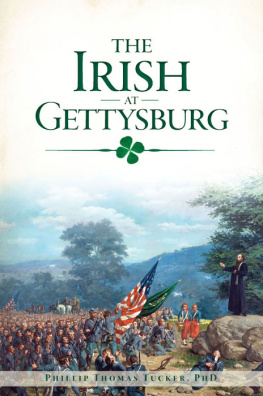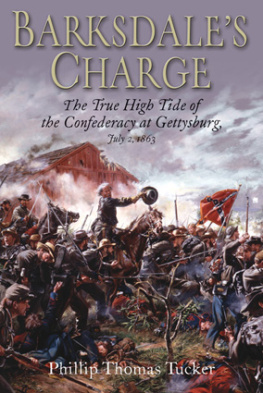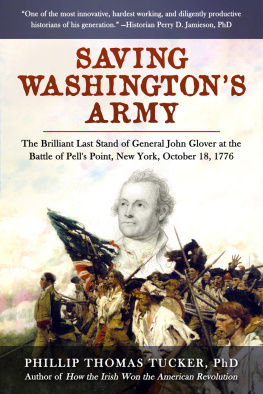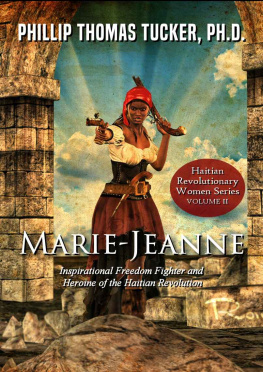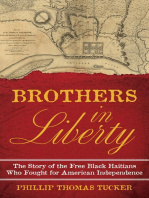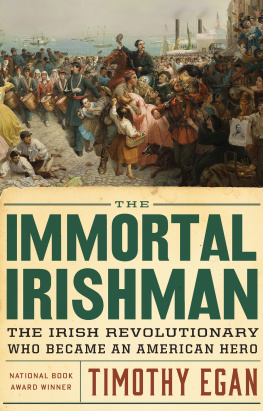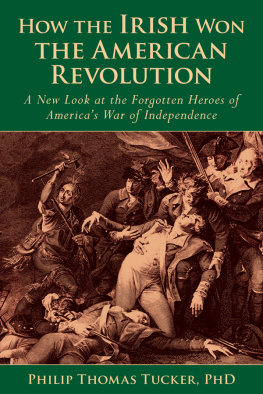ABOUT THE AUTHOR

Phillip Thomas Tucker, PhD, is an author and historian of numerous acclaimed books, including George Washingtons Surprise Attack, Picketts Charge, Death at the Little Bighorn, Miller Cornfield at Antietam and more. After earning his PhD in 1990, he took a position as a civilian historian with the Department of Defense. The author resides and writes in Upper Marlboro, Maryland. Tucker has written more than thirty books on a wide variety of historical subjects.
THE FORGOTTEN IRISH OF THE SOUTH
No soldiers of the Confederacy were more enthusiastic or highly motivated to fight to win the independence of their adopted homeland than those of the Souths largest ethnic group, because the Irish had more to prove to themselves and their non-Irish comrades. The Irish fighting man was a product of dual cultural and historical influences on both sides of the Atlantic. But, perhaps because of the striking paradox of their dual heritage that played a part in their outsized role in the Civil War, the part played by the Irish Confederates has been long ignored or minimized by generations of historians, especially in regard to the Battle of Gettysburg.
The South had early bestowed these Emerald Islanders with greater equality and better opportunities than in the North, especially compared to the major northeastern cities. In addition, breaking away from the grip of the arbitrary power and whims of a faraway centralized government had been the primary Irish dream for centuries, after English armies conquered the Green Isle isolated on Europes westernmost edge in the late 1600s. By 1861, to the thinking of the vast majority of Irish across the South, the looming threat of an autocratic centralized government was no longer posed by London, but by a newly elected Republican president in Washington, D.C., Abraham Lincoln.
The Confederacys desperate struggle for independence was so warmly embraced by the transplanted Irish across the South precisely because it was so similar to what generations of Irishthemselves, their fathers, grandfathers, great-grandfathers and great-great-grandfathershad experienced in attempting to overthrow English domination and to escape autocratic Anglo-Saxon rule.
For the Irish, therefore, the Souths struggle for self-determination was not novel or new, because the act of rising up in revolt against the government had become a way of life for generations of Irish. A deep-seated nationalism and a longing for liberty had never died among the common people, especially Catholics, of Ireland. Quite simply, the most ancient of Irish aspirations had been faithfully resurrected on Southern soil in 1861. Here, the Souths warrior ethic was largely a Celtic-Gaelic one, because the antebellum South was an Anglo-Celtic region. Irelands tragic fate as a subjugated land had been determined by its conquest by the crusading Protestants of England in 1690. This brutal conquest of the native Irish people (Catholics) had even resulted in the persecution of priests, who had long served as inspirational revolutionary leaders among the common people. Leading a Puritan army of crusading Protestants who viewed Catholicism as evil, Oliver Cromwell proved to be an absolutely ruthless leader who was determined to rid the Emerald Isle of so-called heretics (or Catholics) by purging the land by committing systematic massacres with his New Model Army in the name of God and Englands so-called civilizing mission. The worst slaughter occurred at Drogheda, located just north of Dublin, in 1649, when the city ran with blood when around four thousand Catholics, men, women, and children, were slaughtered by Cromwells Protestants, after they breached the citys walls.
Despite the heroic efforts of hard-fighting Irish revolutionaries who battled against the odds and a more advanced military armed with superior weaponry, the common peoples revolts over the course of hundreds of years were repeatedly crushed by English might. What followed each smashed rebellion were ghastly reprisals fueled by religious hatred. In stubborn defiance, the Irish refused to relinquish their native Catholicism, ancient cultural ways, and Gaelic language to a succession of powerful invaders who lusted for Irelands fertile lands: the Vikings who founded Dublin, the Normans and the English (the most lethal and determined to achieve a permanent conquest). The Irish people were hardy survivors of a tortured history and tragic past that was foreign to Americans who had emigrated from England. Most of all, the long-suffering Irish had been early preconditioned for rebellion and molded into an ideal soldiery who possessed the unfulfilled dream of an independent nation.
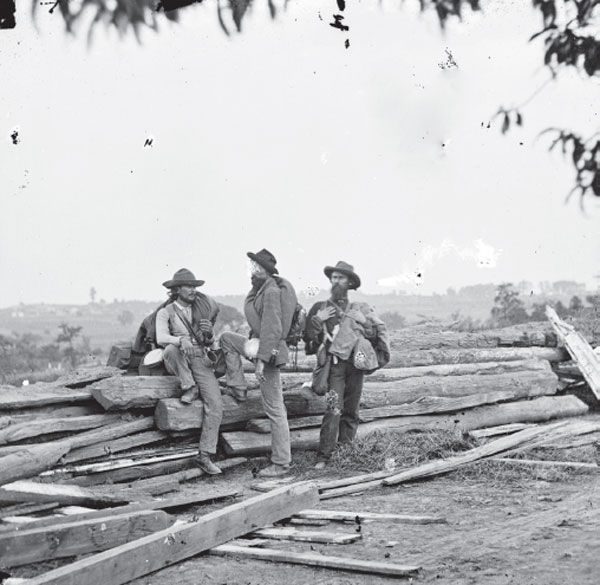
Three veterans of the Army of Northern Virginia captured at Gettysburg. Mathew Bradys photograph of these three defiant-looking Confederates on Seminary Ridge was taken two weeks after the battle. Courtesy of the Library of Congress.
The Irish of the South had gained a keen knowledge of historical analogies that still haunted them in 1861, fueling a desire to rush to arms and fight against the newly elected Abraham Lincoln and his Republican Administration. As they had learned from the British, the transplanted Irish in the South feared the evils of a strong centralized government and despotic leaders. After English armies completed the conquest of Ireland, the English and Anglo-Irish elite had established permanent control (the so-called Ascendency) over the impoverished Gaelic-Celtic Catholic masses, whose fertile lands, owned since ancient times by this agrarian people, had been confiscated by the victors. The English imposed harsh restrictions on everyday life, including religion (priests were correctly seen as potential revolutionary and nationalist leaders who held wide influence among the common people) and Gaelic culture in what was an early form of cultural cleansing. In consequence, the Irish became the most oppressed and impoverished people in the western world.

ABUSIVE CONTROL AND HIGH rents (unaffordable by lowly tenant farmers, who were basically peasantry) forced hundreds of thousands of Irish to depart their homeland in two great waves: first, the Ulster Province Irish from north Ireland before the American Revolution; second, Irish Catholics from 1815 to the 1840s. This Irish exodus reached a peak in the 1840s as a result of the Great Potato Famine. Irelands impoverished people were forced to escape a host of evils, including government abuses, famine, rising rents and economic hard times. Fleeing the ancient homeland to save themselves and their families, the Irish immigrants were, in general, more kindly welcomed in the South than in the North, especially in regard to the major northeastern cities.
Because of the mass exodus of the common people from Ireland for economic, social, and political reasonsmostly Scotch-Irish (Protestant) and then Irish (mostly Catholic) during the Great Potato Famine in the 1840sthe South evolved into primarily a Celtic (or Anglo-Celtic) land, even by the time of the American Revolution. Indeed, by 1861, the South consisted primarily of Celtic settlers (lower and middle class) from Ireland and Scotland, as well as people from other Celtic lands like Wales. From before the outbreak of the American Revolution, the generations-long westward expansion across America had been led by poor settlers, mostly Irish and Scotch-Irish, who had to push toward the setting sun to reach the fringes of settlement and secure land as squatters. Lasting for generations, this was one of the great migrations in human history, with mostly Celtic settlers pushing the limits of the western frontier and their own physical endurance.
Next page
